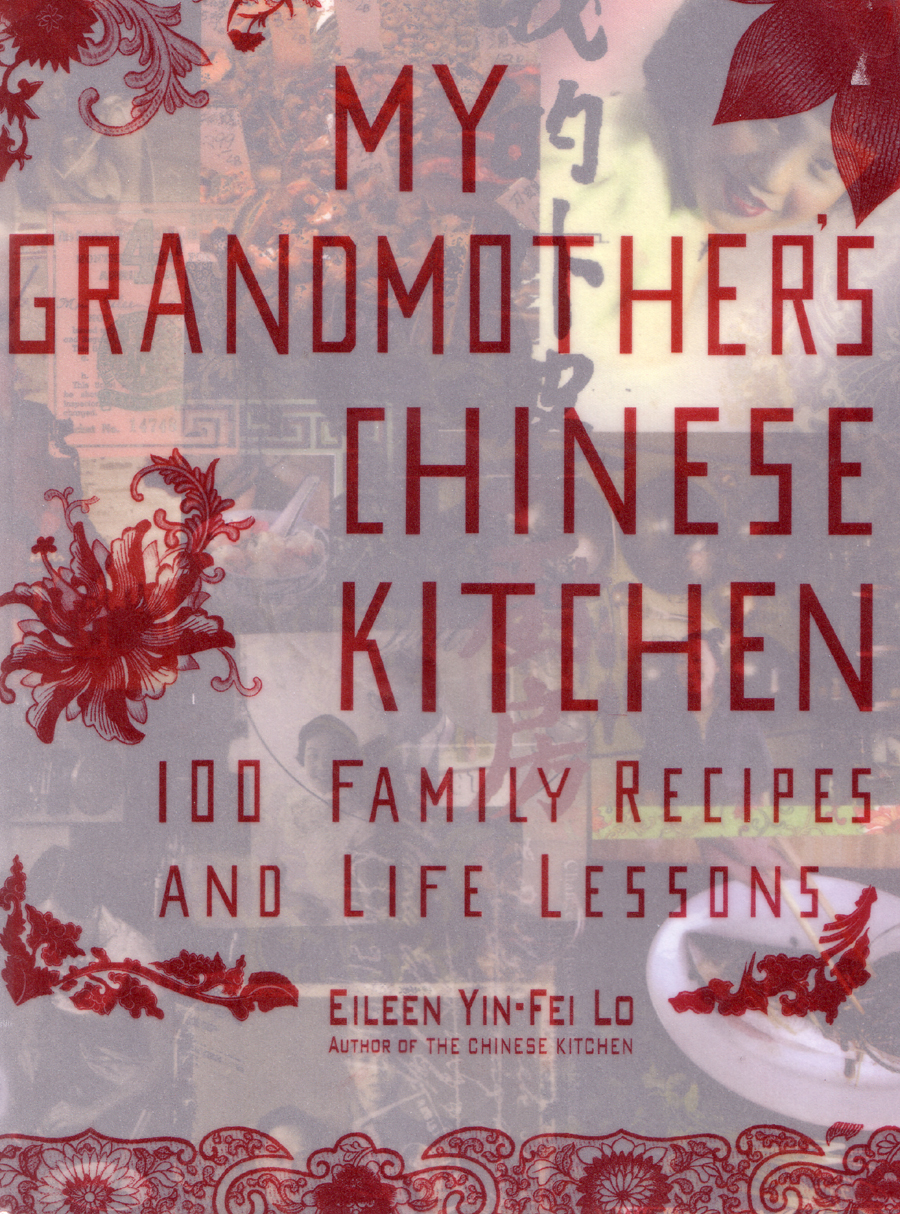
| What is Flavor and Fortune? |
| How do I subscribe? |
| How do I get past issues? |
| How do I advertise? |
| How do I contact the editor? |
Read 13123562 times
Connect me to:
| Home |
| Articles |
| Book reviews |
| Letters to the Editor |
| Newmans News and Notes |
| Recipes |
| Restaurant reviews |
| Article Index (all years, slow) |
| List of Article Years |
| Article Index (2026) |
| Article Index (last 2 years) |
| Things others say |
| Related Links |
| Log In... |
| Authors |
| Categories & Topics |
My Grandmother's Kitchen
by: Eileen Yin-Fei Lo
New York NY:
Home (Penguin Group) 2006, $29.95, Hardbound
ISBN: 1-55788-505-2
Reviewed by: Jacqueline M. Newman
Summer Volume: 2007 Issue: 14(2) page(s): 22 and 23
 The love for grandmother pours through. You will love her, too, and the way she understands and uses food. This is the warmest and best of Ms. Lo's books. Readers will adore its words and want to prepare the Chinese dishes within.
The love for grandmother pours through. You will love her, too, and the way she understands and uses food. This is the warmest and best of Ms. Lo's books. Readers will adore its words and want to prepare the Chinese dishes within.
Memoir cookbooks are the rage, and this one, subtitled: 100 Family Recipes and Life Lessons offers tales that young Lo learned and lives by. Most of the recipes are Cantonese and they are ones Lo still makes for holidays, birthdays, and for ordinary days.
What is fascinating is that Ah Paw, her grandmother, did little cooking. How could she with her tiny bound feet? Nonetheless, she knew how to instruct her staff and her granddaughter about the best ways to shop, prep foods, and cook them.
Not all is wonderful. Eileen Yin-Fei Lo discusses 'taels' which are a Chinese measure for weight. They are known as being from one to two and a half ounces. The author considers them one and one third ounces and says there are twelve to the pound. Most literature says a catty is seventeen ounces. How then does she call a catty sixteen taels and say it equals twenty-two ounces? Do not let such small mistakes dissuade you from trying her recipes. Her cooking is more reliable than her arithmetic.
All transliteration is Cantonese, so those familiar with the common and current use of Pinyin may not recognize siu op as roast duck. However, if they prepare the Roast Duck Ding recipe, they will enjoy a super 'kidney fruit' filling in a bird loaded with cashew nuts, vegetables, duck, and delicious taste. They also may not recognize jing ai guah as steamed eggplant. No need to, all recipes are titled in English, subtitled in Cantonese, and tasting terrific.
Lo wrote this to teach her granddaughter as she was taught. Her Ah Paw once told her: Learn, learn, always learn. Never stop. Everyone should be grateful she did, as through Ah Paw, you will learn, too.
| Steamed Eggplant |
|---|
1 pound thin eggplants, stems removed 2 Tablespoons peanut oil 1/2 onion, cut diced into half-inch pieces 1 Tablespoon sesame seed paste 1/4 cup vegetable stock 3 red chilies, seeded and minced 1 Tablespoon Chinese rice wine or sherry 1 and 1/2 teaspoons sugar 3/4 teaspoon salt 1 teaspoon Chinese white rice wine vinegar 1 Tablespoon sesame oil 3 scallions, green part only, sliced Preparation: 1. Steam eggplant(s) for six minutes or until a chopstick easily pierces the flesh. The remove and put them in a long dish. 2. Using a chopstick, open each of them in half, and move the chopstick top to bottom until many long strips are made. 3. Heat wok or small pan, then add oil and coat the pan. Add onions and cook for three minutes. Then add sesame seed paste, stock, and chili peppers and stir until well mixed and the liquid boils. Add the rice wine, sugar, salt, and sesame oil and mix well, then pour this over the eggplant. Sprinkle with scallions, and serve. |

Copyright © 1994-2026 by ISACC, all rights reserved
Address
3 Jefferson Ferry Drive
S. Setauket NY 11720